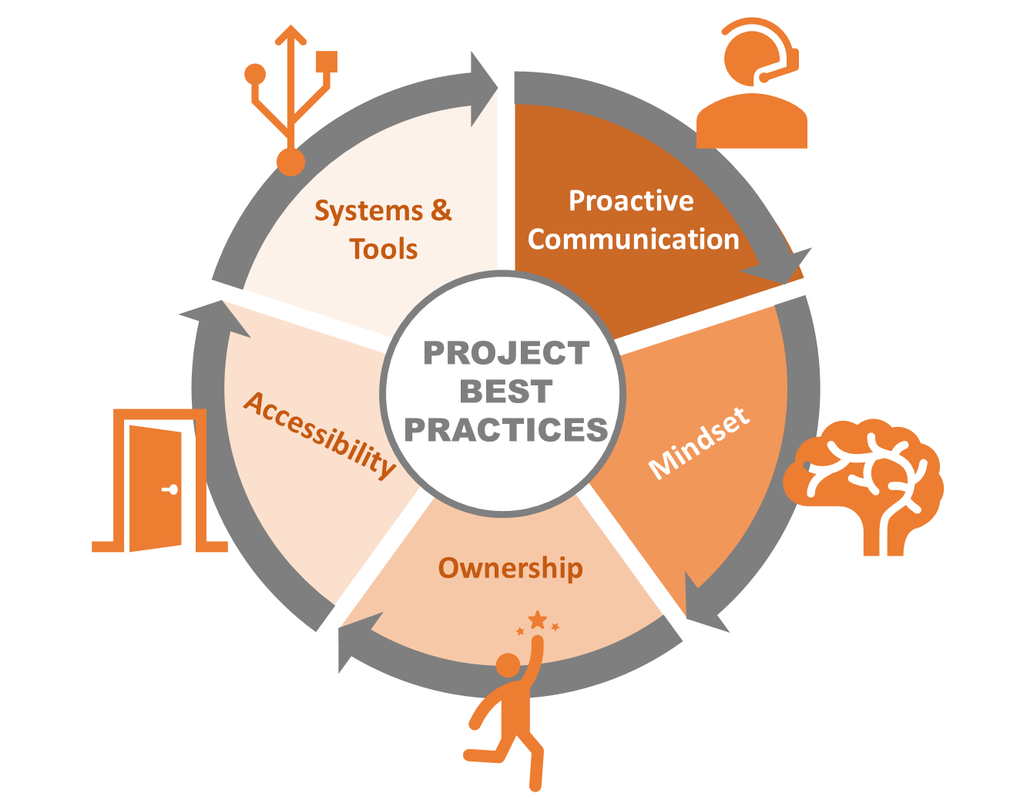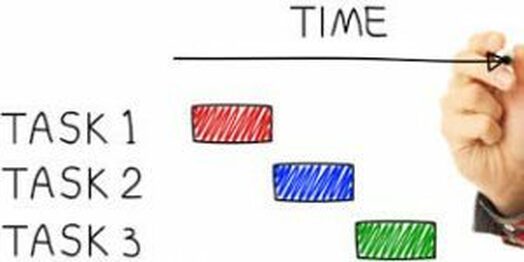|
[This article is also featured on episode 72 of the Business Wingmen Podcast Show] Successful performance is everything! Our ability to execute at work is something we as professionals need to strive towards every day, yet many of our colleagues seem to have forgotten this time-tested reality of business. As Rory Vaden, bestselling business author and leadership speaker, accurately shares, “success is not owned, it is rented - and that rent is due everyday.” Vaden hits on a key piece which would serve all of us well to keep in mind as we come to work - our ability to successfully perform our job is what keeps us gainfully employed. I’ll take it a step further, what got us the job was our credentials, the things we’ve done in the past. What keeps us in the job thereafter is 100% our ability to get things done – the things that matter to the company and our respective performance. The same is certainly true in the consulting world, frankly I would argue it’s even more focused on performance and execution than a normal 8-5 full-time job is. The world of consulting can be summed up in 3 words: execute, execute, execute! Anything less and you’ve missed the mark. Consultants, like many of our fully employed brethren, has a tendency to forget the reason they are there, the reason they have a job – it’s to fix, solve and solution other peoples’ problems. Our inability to do this will inevitably lead to a consultant, or consulting firm, finding themselves unemployed or not getting asked back to continue supporting their customers. It’s for these reasons we need to employ the below five ‘best practices’ in our daily work. Your ability to do so will do two things – help keep you focused on what matters (successful execution of your task or job) while separating yourself from the competition and or your colleagues. Best Practice #1 – Proactive Communication If you’ve ever had some one say to you, especially someone in management, “can you give me an update on where you’re at with X”, you’ve just failed the first lesson of communication. Professionals who operate at a high level understand the importance of fluid and consistent communication. They know it’s important to communicate proactively, ahead of time. They don’t wait until the last minute to spring an urgent matter on the team or their boss, they don’t procrastinate, and they certainly don’t wait to inform those around them they are going to miss a deadline the day the deadline is due. Proactive communication is all about respecting the process and those around you. Best Practice #2 – Positive Mindset The beautiful thing about the way our minds work is we have an incredible amount of power over most of what happens in our heads. In particular, our outlook on things, our attitude, is 100% within our control. If we show up to work with a bad attitude, closed to others ideas, not welcoming feedback and or unwilling to collaborate with others we quickly will build a reputation as a person on the fringes. There’s no quicker way to alienate oneself from a team or your boss than by having a poor attitude. Yes, we all have our bad days – it happens even to the best of us. What’s important is to have your moment and then move on. Focus on what you can control and be open to ideas, different approaches and perspectives. An open and positive mindset is contagious causing your colleagues to feel invigorated working with those of us who can come to the table and leave the sourness at the door. Positive thinking also boosts our health by reducing stress! Best Practice #3 – Ownership We don’t need to be in management or the owner of a company to operate in a capacity of owning our work. Those of us who employ ‘ownership’ in our work don’t make excuses for shortcomings, we don’t worry about excuses because we’re busy finding solutions. When we own our work we don’t wait to be told what to do, we seek work proactively and or ways to improve things around us. People who operate with an ownership mentality have a tendency of being able to make decisions quicker while experiencing success more often. If you’ve ever said “that isn’t a part of my job description” you just failed the ownership best practice. People who own their work get promoted more, are typically paid higher wages and increasingly get called back to help with projects. They take responsibility for how they show up and encourage others around them to do the same. Of all the best practices listed in this article it is my humble opinion the practice of owning ones work and being accountable for it carries with it the biggest positive impact on our jobs. Best Practice #4 – Accessibility In the dawn of everyone working from home these days, or remotely, being able to get a hold of someone during normal working hours is critical. Simply put – if your boss has to track you down every time they need to reach you it probably isn’t going to end well for you in that job. Same is true if your company uses communication tools like Slack or Microsoft Teams. These tools are used to improve communication amongst the team, if you aren’t logged into the tool and or are unresponsive, you’re setting yourself up for a quick career death in your job. This doesn’t mean you need to be chained to your desk or phone eagerly awaiting the next hopeful call by a colleague or boss. What it does mean is that you need to be mindful of the various ways in which your company communicates and be attentive to those processes. If people feel like its easy to get in touch with you and or you respond quickly, they will invariably feel you are on top of things and are a reliable person to work with. For example, our company practices the ‘1/24 rule’ during standard business hours. We expect our teammates to acknowledge a communication with a response within an hour and provide an answer, or what to expect next within 24 hours. We aren’t perfect at this down to the minute (as that would be unrealistic) but I’ll be the first to say this practice makes our teammates highly proficient and therefore their jobs easier. Best Practice #5 – Systems & Tools Whether you’re a consultant, an employee or just new to your job, in today’s world there’s no excuse for not learning a company’s procedures, systems and tools. Those of us who choose not to work within these parameters typically find ourselves making careless mistakes, coming up short on our projects and irritating the heck out of our colleagues and management. Why is this? Well, when we don’t use a tool right, or don’t follow a certain SOP accurately it inevitably makes more work for someone else down the road. Trust me when I say every one hates having to fix other people’s inaccuracies, especially when it’s documentation related. If you’re new to a company do everything you can to quickly spool up by learning the tools, systems, workflows and documentation processes. The quicker you learn it the better your work product and output will be. People may just like working with you better as a result. Conclusion While there are many things which lead to someone being successful in their line of work, I firmly believe these five best practices are things all professionals can do, regardless of their experience, education level, etc. We have a choice to make every day when we show up to work – be the best at what we do or simply be average. As the job market continues to tighten up those of us who are average will find themselves unemployed far more frequently than those of us who choose to operate at a high frequency. It’s a choice – do you have what it takes?
0 Comments
Want to get through your remediation project successfully? Doing these two things helps dramatically increase your chances of success. #fearlessmedtech #remediation #fda #medicaldevice #medtech #quality #compliance #QMS Remediation in the medical device industry is often described as a matter of “it’s not if it will happen, it’s when it will happen”. With so many companies over the years going through major remediation efforts one would think by now most people in the business would have a good appreciation for what success looks like to navigate through FDA remediation projects. Yet, many people will tell you the remediation projects they’ve been a part of were messy, unorganized and a galactic waste of money. Unfortunately, when we’re faced with remediation there is no choice other than to mend our broken wings before flying home for the summer. This sparks an interesting question – if I have a remediation project ready to deploy what are the things I can do to ensure it succeeds? Regardless of the project size implementing these six keys to success will drastically help increase your ability to successful execute on your next remediation project: 1. Ensure Your Entire Company (Especially Executive Management) is Onboard Everyone in the organization, bottom up, needs to understand why this project just went to the top of the work list. Everyone needs to be bought in and rowing in the same direction, otherwise you’ll experience cumbersome internal issues as mentioned above, which waste time, money and energy. One can accomplish by using a tactical scorecard as described in #4. 2. Establish Clear, Consistent and Easy Communication Protocols for the Project Once your entire management team and company is onboard its time to set expectations for communication. This is one of the most overlooked parts of any large scale project. It’s especially important when considering cross functional company divisions and the people accountable to working towards successful completion. When people are misinformed or don’t know what’s going on you can be certain it will slow your project down and cause further product quality and procedural issues down the road. 3. Get a Lobbyist You’ll need someone acting as the liaison between your company and the FDA. Typically, this person comes from your QA/ RA group, but is that the right person? Don’t assume your de facto executive in QA / RA is the best for the job. Ensure your company aligns itself with a proven individual who has relationships within the FDA and knows how to play the game. If necessary get a consultant to support this effort. This will pay off huge dividends in the end as they’ll know how to navigate delicate situations, get continuances and or leniencies where able. 4. Employ a Tactical Scorecard Remediation projects can quickly run off the rails if leadership isn’t hyper focused on tangible execution. When projects span an entire organization involving dozens of resources and a multitude of external suppliers its easy for things to get lost in the shuffle causing delays and confusion among the troops. To overcome this challenge utilize a tactical scorecard which everyone in management has access too along with anyone who is in a lead role for the remediation project. It’s a project charter and Gantt Chart combined into one, just simplified. This scorecard should breakdown the project into four or five key areas as necessary, but no more than five. Each of these project areas act as a cost center of sorts for accountability. Within each area you’ll have the activities coming up in the next 30 days, deliverable dates and the people who own the work. A process like this creates transparency while providing clear direction. The key stakeholders should meet at least monthly, if not earlier, to review the status of the project in comparison to the scorecard. SCRUM style meetings offer a good approach for transparency and accountability. 5. Learn How to Manage Cost Early On Often companies will use a consulting group to lead or help work through their remediation efforts. All too often the selection process for that supplier comes down to a key relationship within the company which basically side tracks any formal vetting process of other possible suppliers. Cost becomes a 2nd or 3rd consideration over a relationship. This can be disastrous as selecting the wrong supplier to help you with a remediation project can end up costing you thousands, if not hundreds of thousands, of dollars extra down the road. Case in point – when you use suppliers that fly in consultants you are literally paying more than double the cost for that service just because those resources weren’t local. Flights, housing, food, per diems, auto, travel, etc. adds up incredibly fast. I’ll admit, sometimes the best solution is an out-of-town supplier, however be sure to do your homework before you settle on the one supplier that’s going to get your company back on track. 6. Know the Difference Between Execution & Strategy As mentioned above, companies use consultants because it’s a good way to get ahead of a remediation project with people who have been there an done it before. It momentarily expands your bandwidth for as long as you need. While that sounds lovely there is a downside to the consulting and client relationship – the difference between strategy and execution. Some consulting companies bill themselves as experts and charge big prices to boot. What many companies find out the hard way is that these overpriced consulting firms stay up in the stratosphere where strategy is best played and seldom come down to the ground level to get their hands dirty. This means they can put a plan together but executing on it is another story all together. If you’re going to use a consulting firm make sure your contract includes deliverables which focus on execution and completion of work. Key Take Away: If you’re heading into an FDA remediation project it is paramount to set up a company wide communication protocol which provides direction and project updates in real time. Action Item: Remember – it’s not ‘if’ but ‘when’ you’ll find yourself in a situation where you’re stuck going through remediation. Therefore, you must be proactive. Before you need the help, begin compiling data on suppliers that could help with a possible remediation project. Compare their capabilities, learn how they would approach a potential project, how do they charge, etc. Once you’ve done your homework you’ll then have all the necessary information upfront to make a strategic and informed decision when it comes time to dive into remediation. Technologist, including engineers, are often unfairly labeled and stereotyped as lacking soft skills when it comes to interacting with other people. Words like ‘quirky’, ‘introverted’ and ‘rambling’ are often used to describe technologists and how they interact with others. After more than 15 years in the medical device field working side by side with my engineering colleagues I’m convinced these adjectives unfairly characterize many technologists, yet the use of these descriptions continues to permeate conversations rather consistently. Whether you’re a technologist or not, the simple truth is we all could use a little help in upgrading ourselves professionally. Continual improvement is a cornerstone for a good professional and so is proper business etiquette. If you’re looking for a way to improve how you show up, including how those around you perceive you, consider the following nine steps to boost your business etiquette: 1. KISS (Keep It Simple, Stupid) A wonderful acronym to say the least. Those of us who like to tinker and develop products have a tendency to overcomplicate the outcome, as well as our communication. When we ‘over engineer’ our ideas, products or conversations it shows a lack of understanding for the true need as well as our ability to hold back personal interest before company needs. Good business etiquette in this area is when we build awareness around the importance of keeping things simple which focuses on driving greater realized value for the end user. “Simplicity is the ultimate sophistication.” – Leonardo Da Vinci 2. Understand the Big Picture Technologist can be stereotyped as not understanding the company’s bigger picture and its goals as a business. Its important engineers slow down to take the time to understand how their role impacts the business, especially how their decisions impact things downstream. When we understand the big picture we’re able to remove ourselves from our preconceived notions and think like business professionals, not just technology developers. This becomes crucial when we’re making decisions early in the product development process on product needs versus how that need supports the company’s mission and the needs within the marketplace. Just because something is a great feat of engineering awe doesn’t mean it is necesary for the product, the company and or the customer. 3. Be Proactive With Your Communication Engineers live a life of projects. They go from one project to another in their day to day work and as such they’re often embroiled in deadlines. There’s nothing more frustrating to have someone on your team report the day of the deadline that they are going to miss it. That’s unacceptable. When we have good business etiquette we respect the other people on the team by communicating proactively so the team is prepared, especially in a situation where we may be missing a deadline. Don’t wait to communicate. 4. Understand Your Cross Functional Colleagues It’s poor business etiquette for engineers to only stay in their lane and not get to know, interact with, or understand their colleagues in non-technical roles. Why is this the case? Read #2 on this list. When we don’t understand the bigger picture of the business, how it runs and operates, how decisions are made and why they’re made, our ability to be a productive employee is reduced to chance. Ever seen someone come up with an idea which they claim to be amazing or revolutionary to be shot down shortly thereafter from another person in the company? More often than not that idea infringed on #1 or #2 within this list. For example, if you make a suggestion to add a feature to an existing product without taking into consideration the cost to manufacture it or if the companies sales people can actually sell it to their customers you’ve singlehandedly shown that you can come up with ideas which have little merit in their ability to be executed. 5. Good Enough Vs. Perfect Confucius said, “Better a diamond with a flaw than a pebble without.” When we chase perfection we often find ourselves on a never ending journey where we’re busy as can be without accomplishing much. Its important engineers build awareness around the idea that nothing is ever finished therefore it isn’t settling if perfection isn’t achieve. We should expect it and build product updates into our process down the road. Apple, Inc. does this all the time with their new releases and they still have people lining up around the block to buy their products, regardless of the initial glitches and bugs associated. 6. Handshakes and Eye Contact Those of us in technical fields can at times get a bad rap for not being social butterflies who know how to engage with others. Let’s buck the stereotype! Good business etiquette tells us it is important to give a firm handshake upon initial interaction with another person. In fact, its common to hear from leaders that a poor handshake can be the difference in someone getting a job. The limp wrist, fish handshake belongs nowhere in business. Same can be said about eye contact. Be intentional with your eye contact when speaking with someone in person. Looking at the floor or down at your lap gives others the impression you aren’t confident in yourself. 7. Ditch the Cell Phone Your cell phone needs to stay in your pocket at all times when you are engaged with others, especially in a business setting, unless you are using it as part of the discussion. If you’re in a conversation, including a group conversation, and you’re simultaneously thumbing through your social media you’re giving off a sign that what other people have to say isn’t important. Put the phone away! Your digital friends, who you’ll never meet anyways, won’t even notice you’re not there to like their cat memes. FOMO no mo. 8. First Impressions Are Actually Important This goes hand-in-hand, pun intended, with #6. The way we show up with other people, especially during a first impression can make or break someone’s perception of you. Greet people, shake their hand, learn their name. Make an effort to engage with them. Be polite and considerate. Lastly, be groomed! If you’re appearance is disheveled or unbecoming of a professional that’s how you’ll be treated. Most technologists make a healthy living in their careers, it’s important you act like it, at least upon first impressions. 9. Respecting Others Lack of Technical Knowledge When you’re talking to a layperson, a non-engineer, do your best to use simple, straightforward language. People who aren’t engineers already are often times giving you the benefit of the doubt that you’re smart. (this is the one time when a stereotype works in your favor) As such, you don’t need to impress people with your technical prowess by using terminology and theoretical concepts which fly over the head of the other person in the conversation. Be mindful of who you are talking to and adjust accordingly as this will ensure the discussion is fruitful for both parties. If the other party wants more information they’ll signal to you to get into the weeds, then its go time! When we’re demonstrating good business etiquette we simultaneously show that we respect others while respecting ourselves. Take the time to build awareness in this area of your career, it will pay dividends in spades over the long haul. Co-Authored by Trisha Aure & Travis Smith
Many of us have been confronted as of recent with a reality which isn’t the status quo from before. As we continue to evolve and adjust our business and professional lives around COVID-19 inevitably many things will change for us in the short term. How we adapt to those changes makes or breaks our ability to grow personally while continuing to excel professionally. As social distancing continues to be a requirement in order to deal with COVID-19 companies and their employees are finding themselves in one of the biggest predicaments of arguably the last 40 years – the way we’ve done things in the past won’t work in the future. One of the biggest changes companies are having to adapt to is their employees not being able to come into the office, resulting in hundreds of thousands of people working from home – and doing so for their first time. We’ll be the first to tell you it can be a rather jarring experience if you don’t go about ‘working from home’ in a methodical fashion. With the freedom which comes from working at home also comes great responsibility – a responsibility that can be downright tough for many of us as distractions are a plenty. Below are 15 tips for working at home you can implement to ensure your time is efficient while succeeding with a masters grace:
Take Away Creating a new ‘work from home rhythm’ as close to our normal routine as possible will be the quickest way to staying on track with work and personal life. Schedule your day everyday and communicate that with your team and manager. You will find you’ll get more work done, often in a quicker timeframe. Key Consideration This is not a time to panic, this is the time to adjust and keep moving forward. A positive mindset and an openness to change are the keys to success here. Remember, things will resume like usual at some point soon. Keep your head up, smile, wash your hands and remember to be kind to others. We got this!
|
Visit Square-1's
|
|











 RSS Feed
RSS Feed


